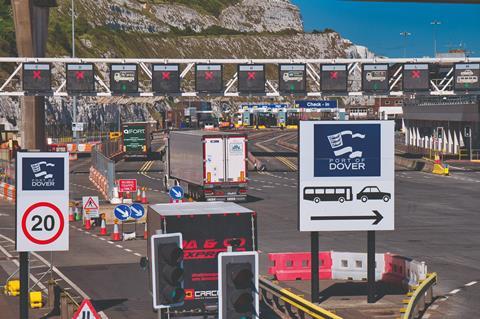The costs of the UK’s new security and sanitary controls have been vastly underestimated, argues Peter Hardwick and Nan Jones of the British Meat Processors Association (BMPA).
When the import requirements for the UK’s Border Target Operating Model (BTOM) came fully into force from 30th April 2024, the full impact on import costs finally struck home. And it is not a pretty picture.
Defra said that the new requirements would be ‘minimal’, estimating they would amount to a trivial £300 million per annum and have a minor effect on food price inflation, leading to an increase of less than 0.2% over three years.
The costs of the BTOM are not trivial and have been vastly underestimated.
The Government had focused on the Common User Charge (CUC), which is the charge on “eligible imports coming to fund the operation of planned Government-run BCP facilities serving Port of Dover and Eurotunnel to make sure physical checks on SPS imports can be undertaken safely and securely.”
“Government needs to urgently review this as the costs are excessive and in no way connected to the level of checks taking place.”
For medium risk products such as fresh meat, this is set at £29 per commodity line in a common health entry document (CHED), but limited to five, meaning medium- and high-risk CHEDs will be capped at £145. This does not mean, as claimed by one Defra Minister, that the maximum cost per truckload would be £145! A groupage load of say five consignments with five CHEDs and each with five product lines would come to £725 for a single truckload.
But the bombshell is an additional cost, which even the Government now admits is not clearly explained in the information it publishes, and which dramatically changes the picture on the true costs of importing following the introduction of the BTOM requirements. This is the charge being levied by the Port Health Authority, which is described as an SPS documentary and inspection charge associated with any checks that goods may undergo - consisting of documentary, identity and physical inspections. The rate at which these are being charged by the Ashford Port Health Authority (PHA) for consignments coming through Dover and Eurotunnel is a minimum £66 for consignments up to six tonnes and £11 per tonne thereafter.
Now, you might think logically that this charge is levied in addition to the CUC only when consignments are sent to the BCP for inspection or stopped for a document check. But the reality is that it is being charged for every single medium and high-risk consignment coming off the ferries and trains, the vast majority of which are waved on their way without a glance.

The simple fact is that a charge is being levied to do nothing other than an online, automated check of the CHED. And it is notable that for plant product imports no charge is raised if goods are automatically cleared. In fact, import agents have told us that when they are completing IPAFFs, it shows “no Inspection required’ as soon as they have completed them and the CHEDS are returned showing “no document check”, and “no inspection”.
These charges are not to cover the facility costs at Dover and Eurotunnel, or the work being done there, but for checks at Sevington, which falls under Ashford Port Health and which the vast majority of consignments don’t go near. And this is in addition to the Common User Charge to “fund the operation of planned Government-run BCP facilities serving Port of Dover and Eurotunnel”.
At least 1000 full truckloads of medium- and high-risk products a day are moving through these ports alone and at 22 tonnes per truck this amounts to a daily cost of over £240,000 or £88 million per annum.
Calling this a double whammy would be an understatement. The Government needs to urgently review this as the costs are excessive and in no way connected to the level of checks taking place. For the vast majority of freight there are no checks at all, and in any event these levels of charges are based on the historical premise that checks would take place at the rate of 15-30%, not 2%.
These costs must inevitably find their way to consumers through higher prices, and they are significant, not ‘minimal’.



















